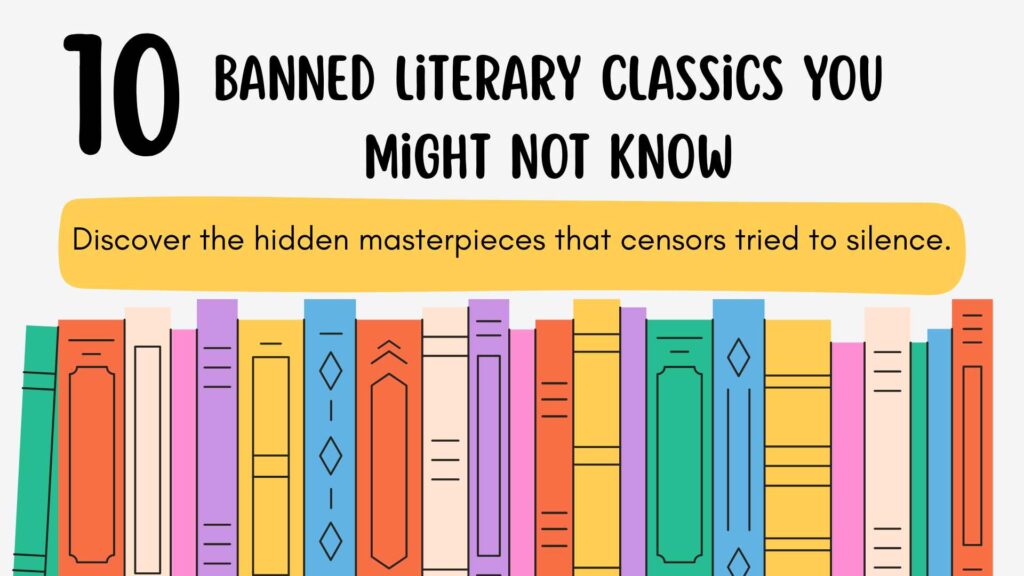10 Banned Literary Classics You Might Not Know
Books have always had the power to disturb, inspire, and question the values of their age, which is why many have been banned or censored. While well known cases such as Ulysses or Lady Chatterley’s Lover often take the spotlight, there are many other classics that faced similar opposition but are not as widely remembered.
The following list highlights ten such works, each a literary masterpiece that was once considered too controversial for readers.
1. Sons and Lovers by D.H. Lawrence
Before Lady Chatterley’s Lover brought Lawrence into the center of obscenity trials, Sons and Lovers (1913) had already sparked outrage. Critics in Edwardian England found its frank portrayal of sexuality scandalous. In the United States, it was restricted under the Comstock Act, which targeted material considered “immoral.” Ironically, the novel’s enduring power comes from its raw portrayal of working-class life and complex human relationships, subjects far removed from the polite drawing-room fiction of the time.
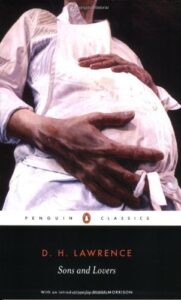
2. Cat’s Cradle by Kurt Vonnegut
Published in 1963, Vonnegut’s Cat’s Cradle mixes dark humor with biting social commentary on technology, politics, and religion. These very qualities also landed it on banned lists. Schools objected to its irreverent tone, while others claimed it was too pessimistic about science. Today, readers admire it for the same reasons — its sharp warnings about blind faith in progress feel startlingly relevant.
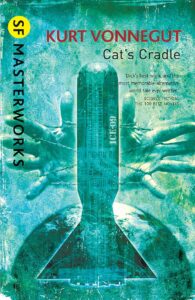
3. Mrs. Dalloway by Virginia Woolf
Woolf’s 1925 masterpiece Mrs. Dalloway is celebrated now as a pioneering work of modernism, but early readers balked at its frankness. Censors objected to its depiction of Clarissa Dalloway’s same-sex desire, as well as its exploration of mental illness and trauma. In the 1920s, a female author tackling such themes only heightened the controversy. What once drew bans is today recognized as a cornerstone of feminist and LGBTQ+ literature.
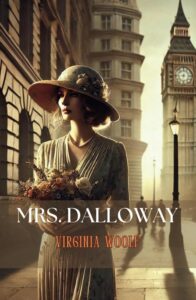
4. Naked Lunch by William S. Burroughs
Burroughs’ surreal, fragmented novel about addiction and hallucination shook the literary world when it appeared in 1959. Authorities in the U.S. labeled it obscene, and even the German edition omitted entire passages to avoid scandal. But Naked Lunch would eventually be vindicated in court, paving the way for greater artistic freedom in American publishing. Its nightmarish visions remain some of the most unsettling in modern literature.
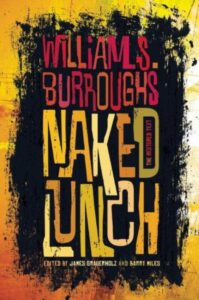
5. One Flew Over the Cuckoo’s Nest by Ken Kesey
Kesey’s novel One Flew Over the Cuckoo’s Nest, set in a psychiatric hospital, drew fire for its depictions of sexuality, authority, and rebellion. From the 1970s through the 1990s, it was challenged repeatedly in schools for being “too disturbing.” Ironically, its story of resistance to institutional power has resonated with generations of readers who see themselves in Kesey’s flawed but defiant characters.
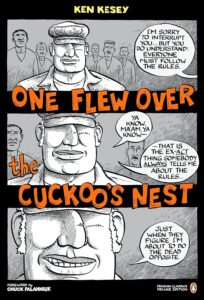
6. The Master and Margarita by Mikhail Bulgakov
The Master and Margarita by Mikhail Bulgakov, written during Stalin’s regime but left unpublished until decades later, is a satirical masterpiece that fuses magic, politics, and religion. Soviet censors heavily cut the novel, removing passages that mocked bureaucracy or challenged official ideology. When the complete text of The Master and Margarita finally appeared abroad in 1967, it caused a sensation. Today, its fantastical story of the Devil’s visit to Moscow endures as both sharp satire and a powerful declaration of artistic freedom.
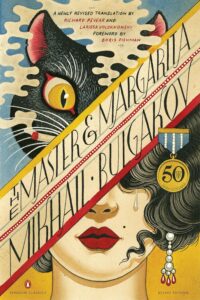
7. The Bluest Eye by Toni Morrison
The Bluest Eye by Toni Morrison, published in 1970 as her debut novel, tells the heartbreaking story of a young Black girl who longs for blue eyes—an emblem of whiteness and the beauty standards imposed by society. The book has frequently faced challenges and bans, especially for its unflinching depictions of sexual violence, and remains restricted in some schools even today. Yet The Bluest Eye endures as essential reading, with Morrison’s fearless exploration of race, identity, and trauma leaving a lasting mark on literature.

8. Blood and Guts in High School by Kathy Acker
Blood and Guts in High School by Kathy Acker, published in 1984, is avant-garde, raw, and uncompromising. The novel was banned in several countries, including Germany, South Africa, and Turkey, due to its experimental style and explicit sexual content. While the controversy was inevitable, Blood and Guts in High School also cemented Acker’s reputation as a radical feminist voice. Today, it stands as a landmark of postmodern and punk literature, studied for both its boundary-breaking form and its fearless politics.

9. Querelle de Brest by Jean Genet
Querelle of Brest by Jean Genet, first published anonymously in 1947, tells a story of sailors, crime, and queer desire that quickly gained a reputation for indecency. In 1952, the French government banned the novel for “public immorality,” citing not only its content but also Jean Cocteau’s explicit illustrations. Genet—ever the literary outlaw—embraced the scandal. Decades later, Querelle of Brest inspired Rainer Werner Fassbinder’s 1982 cult film Querelle, ensuring the novel’s provocative legacy endures.

10. Tropic of Cancer by Henry Miller
Tropic of Cancer by Henry Miller, first published in 1934 in Paris, shocked readers with its candid depictions of sex, poverty, and the bohemian life of an expatriate writer. Banned for decades in the United States and the United Kingdom on grounds of obscenity, the novel became a flashpoint in battles over censorship and literary freedom. When U.S. courts finally lifted the ban in 1964, Tropic of Cancer was hailed not only as a groundbreaking modernist work but also as a landmark victory for free expression.
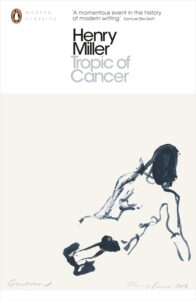
Conclusion
These ten works show that censorship often reflects fear — of sexuality, of rebellion, of new ideas — more than genuine harm. Each book listed above survived its banning to become a celebrated classic. Their stories remind us that the act of banning a book usually says more about society’s anxieties than about the literature itself.

